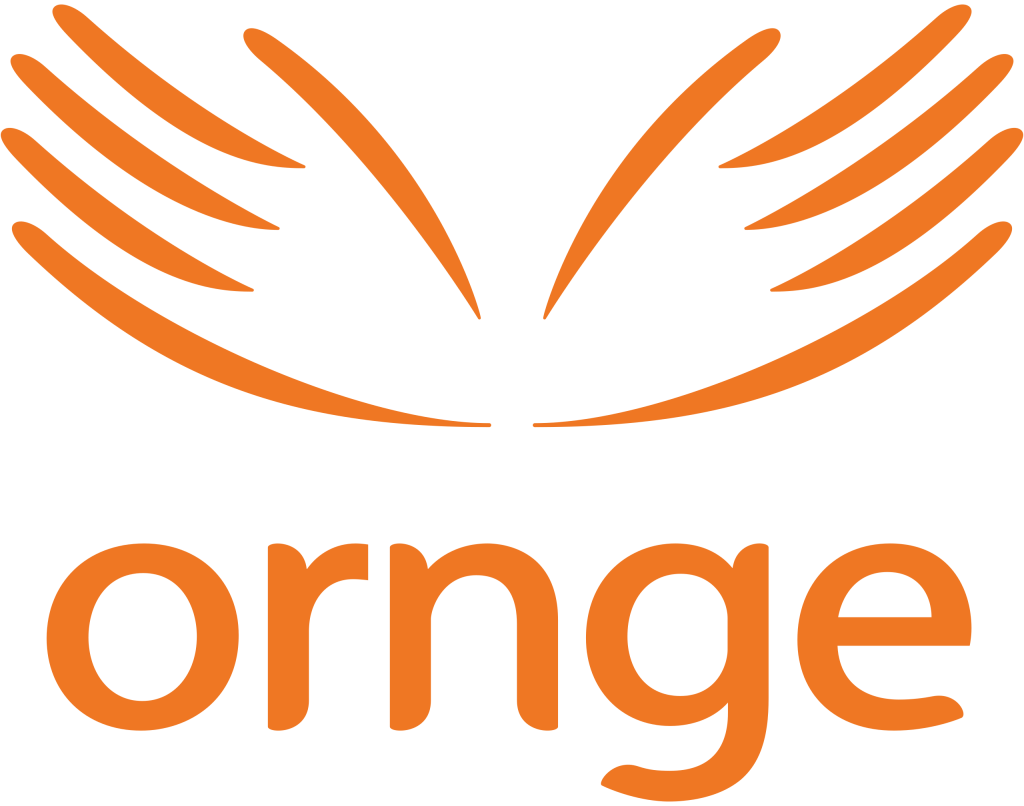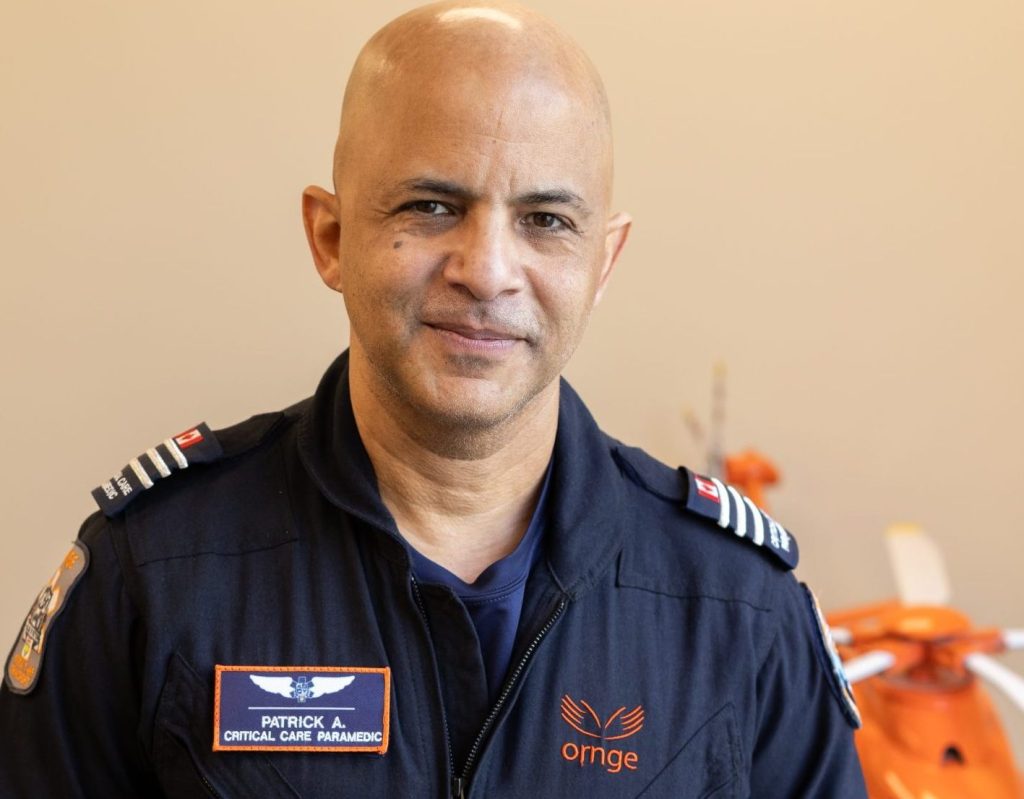Ornge: Connecting Ontario Communities with Critical Care
Connecting to the future of critical care with Ornge, Ontario’s air ambulance and medical transport provider
Thornhill Medical works with military, humanitarian and emergency medical providers around the world, training and equipping them with our mobile micro-integrated life-support technology MOVES® SLC™ for use in austere and highly challenging environments. These can include air or ground transport and medical evacuation — scenarios which typically feature urgent and often multifaceted critical care needs, extremely compact spaces, and unpredictable conditions.
Patrick Auger, Special Operations Coordinator at Ontario’s air ambulance and critical care transport provider, Ornge, recently shared his insights into the unique challenges and incredible heroics of providing air ambulance service and medical transport in the air and on the ground across Ontario —a service area of more than one million square kilometres in size, roughly equivalent to the size of France, Spain and the Netherlands combined.
Patrick reveals how Ornge is mobilizing talent, skill and technology in support of its mission to save lives, restore health, create capacity and preserve dignity across Ontario’s health care system, and the role integrated mobile technology like MOVES® SLC™ can play in future-ready mobile critical care.
ORNGE AT A GLANCE
Services: Air ambulance and critical care transport, interfacility medical transport, emergency scene response & more
Service area: Ontario, Canada; 1 million+ square kilometers, pop: 14.5M
Annual impact: 20,000 transports
Fleet:
12 Leonardo AW-139 helicopters
8 Pilatus Next Generation PC-12 airplanes
13 Crestline Commander land ambulances.
Plus Ornge has contracts with three Standing Agreement air carriers which perform mainly non-urgent transports in Northern Ontario


Meet Patrick Auger, Special Operations Coordinator, Ornge
What is Ornge and what role does it play in Ontario’s health care system?
"Ornge is very much a connecting organization, primarily doing critical care transport. A big part of what we do is interfacility critical care transport, transporting critically ill or injured patients from smaller institutions to larger institutions. And a significant component of that is dealing with northern, remote indigenous communities. For example, we have 31 communities that we service that don't have land or road access; [they are] simply fly-in communities.
So, we're moving patients over long distances; in some cases, the equivalent of Toronto to Florida and back on a daily basis.
We're also involved in scene response, responding to major highway accidents, or going into remote locations, such as our provincial or national parks where we're picking up injured patients, and moving them to trauma centres.In all these scenarios and more, we’re transporting adult patients, high-risk obstetrics, pediatric patients, either in urgent scenarios or in conducting a wide range of less urgent but still vital transfers, getting patients from smaller communities to their CT scan or specialist appointment and so on."
How is Ornge’s work evolving, and what does that mean for you?
"Coming out of the [COVID 19] pandemic and looking to the future, we recognize a need for additional capabilities to meet Ontario’s changing health care and transport needs. In my role as Special Operations Coordinator, I am working with my colleagues to put some of those specialized capabilities in place; for example, transportation of special pathogens, the ability to support urban search and rescue, and the ability to deploy resources and provide surge capacity to under-resourced areas. And we're also looking at major incident response as part of that capability.
Over the last couple of years, climate change has been a growing issue. We've seen significant forest fires and related conditions such as derechos and heat domes, and it all has the potential to have a significant impact on major populations. Part of our role at Ornge, aside from the day-to-day operations of moving patients safely from point A to point B, is to look at how we can provide specialized capabilities to deliver patient care and transport in these expanded scenarios in Ontario."
Describe some of the scenarios in which you see mobile life-support technology like MOVES® SLC™ supporting and extending capabilities at Ornge.
"We've looked at several use-case scenarios for the MOVES® SLC™ system at Ornge.
We have it as part of our surge kit and within our special operations program, pre-positioned and prepared for deployment operations in a variety of situations.
I’ll describe three among many: urban search and rescue, health care support in a remote community with limited resources, and buildings of opportunity which may not have oxygen infrastructure.For urban search and rescue, let’s say there is a major structural collapse somewhere with patients who need resuscitation and mechanical ventilation. They can be accessed but they’re trapped and awaiting extrication, which might be complicated.
Historically, we'd run smaller D-cylinders or E-cylinders down to the patient. Depending on the ventilator, you might get 20 minutes out of a D-tank, maybe 40 minutes out of an E-cylinder. It becomes logistically complicated to cycle those D- and E-cylinders into the situation. But MOVES® SLC™ flips the scenario. With a single cartridge change, we have eight to 10 hours instead of 20 to 40 minutes. That's a significant improvement in capability. In our kits, we carry three cartridges, so from a capability standpoint, we're looking at 30 hours of ventilation, provided we've got sufficient batteries or power. Power isn’t usually the problem; the issue is oxygen. "
"Health care support in remote communities is another scenario we prepare for. I mentioned earlier that there are many communities in Ontario that are fly-in access only, with no road access. Health care in this kind of community is delivered by a nurse or other health care professional at a clinic or a nursing station, but there might not be a physician. Oxygen is limited; there might have a basic O2 concentrator, maybe a D-cylinder of oxygen, or sometimes none at all. So one of the scenarios we plan for is a COVID outbreak, for example, where there isn’t robust oxygen infrastructure. We have pre-positioned MOVES® SLC™ systems with an operational plan to deploy into a community and stabilize the situation until we can provide medical evacuation to hospitals.
Major incident response is a third use-case we’ve looked at, and in particular, “buildings of opportunity”. A community hospital will identify a space – it could be a high school gymnasium or a community centre, something like that – where they are going to reposition if the hospital infrastructure is impacted or at capacity. They will move an emergency department or in some cases an ICU to these buildings of opportunity. But we have to recognize that buildings of opportunity, especially in smaller or more remote communities, have limited resources, especially oxygen. The challenge quickly becomes a matter of oxygen duration calculation; that is, if a patient is on a ventilator there, we might only be able to ventilate them for a few hours given the limited oxygen supply.
We’ve put this to the test in a planning exercise. In July 2021, Ornge worked very closely with our provincial Emergency Medical Assistance Team (EMAT) to operationally deploy two MOVES® SLC™ to provide surge support in a remote community. Part of that surge planning was to recreate vital medical infrastructure in buildings of opportunity, or, in this case, tent infrastructure. While the operational plan was to evacuate patients before we had to resuscitate the patient, sometimes there are delays. And sometimes there are poor weather conditions; we may not be able to get an aircraft into some of these communities for two or three days.So we pre-positioned the MOVES® SLC™ systems as a mitigation strategy, in case the weather tapped out on us, and in case we had to resuscitate a patient, which would require us to do a rapid sequence intubation and then put them on a vent for awhile. It gave us a high degree of confidence to have a device available for us to be able to do that successfully."
How does MOVES® SLC™ integrate with Ornge’s fleet of vehicles and what opportunities could it unlock for Ornge in the future?
"I mentioned buildings of opportunity, but the same principle applies to vehicles. MOVES® SLC™ enables us to take an aircraft that's not necessarily configured as an air ambulance and equip it for patient support during transport.
Ornge has a dedicated fleet — helicopters, fixed-wing aircraft, land critical care transport vehicles — available 24/7. In the event of a major incident, one of the goals is to avoid disrupting day-to-day operations; even though our resources are required at the major incident, the heart attacks are still there, the babies still need to be delivered, and we still need to be moving patients across Ontario.
So, in addition to our dedicated fleet which handles all the high-acuity critical care calls, we have access (through agreements with other carriers) to another fleet of aircraft for lower priority transfers or surge capacity. These aircraft have a stretcher, a monitor, maybe basic oxygen, but they don’t have a ventilator and they're not configured for critical care transport or even advanced care.With MOVES® SLC™, we can take one of these aircraft, secure a MOVES® SLC™ system into it, and it's going to provide us with ICU-monitoring capability, a ventilator, even an O2 concentrator. These aircraft have Brownline tracks; because MOVES® SLC™ is compatible, we can secure the device to the floor quickly. That means, in the case of a major incident, MOVES® SLC™ allows us to quickly reconfigure these contracted aircraft and redeploy them for critical care transport.
It really provides an opportunity for us to flex when we need to."
"A similar planning scenario is ICU offloading. This came up during COVID when hospitals and patient air transport were all operating at maximum capacity, and we were faced with transporting patients by land for longer distances than usual to other hospitals and ICUs around the province.
For example, during COVID, we were moving patients from Toronto to Ottawa. That's about 450 km, about a four-and-a-half to five-hour drive in good weather, sometimes longer. With no aircraft available, we had to reach out to some of our municipal paramedic partners and turn a 911 ambulance into a critical care transport vehicle.
The challenge is the oxygen duration calculation again. The majority of these vehicles have M-type cylinders, which is insufficient for moving patients from point A to point B over these long distances.
So we’ve looked at what ICU offloading might look like with the MOVES® SLC™ system in place. With power [batteries] and cartridges on board, it provides the capability to move these patients over long distances. So as part of our surge planning now, we're planning to use the MOVES® SLC™ system as an option when we don’t have access to aircraft."
"At Ornge, we’ve identified certain areas for the MOVES® SLC™ system. For us, I think it's a great device for major incident response. It's a great device to be able to deploy into remote austere environments. It’s useful, which is why our team put surge kits together with the device. It provides a very specific capability that some of our other equipment items don't have. And we've found a home for it because it does fill a gap."
Watch Patrick Auger's entire interview
As Thornhill Medical marks its 20th anniversary as a global leader in innovative mobile medical technology for use in combat casualty care, disaster relief scenarios and medical transport, we are honoured to support Ornge in its vital mission to save lives, restore health, and create capacity across Ontario’s health care system.
